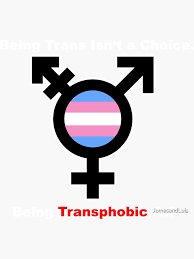The journey of transitioning from male to female (MTF) encompasses a myriad of changes, both emotional and physical. One of the most prominent transformations occurs in the facial features, where the effects of hormone therapy, surgical interventions, and individual uniqueness come into play. Understanding MTF face changes can empower individuals to embrace their evolving identity while navigating this significant life chapter. In this article, we’ll explore the various aspects of MTF facial transformation, including what to expect, common changes, and tips for enhancing those newfound features.
Understanding MTF Face Changes: A Quick Overview
Facial changes during an MTF transition can be profound, influenced largely by hormonal adjustments and surgical options. For many, the desire for facial feminization stems from a need for alignment between their physical appearance and their gender identity. Recognizing that these changes are part of a personal journey is essential, as each person’s experience is unique and may not conform to a specific timeline.Forced Feminisation ArtSynthetic Estrogen Replacement
Whether you are just starting to explore hormone replacement therapy (HRT) or considering surgical options, it’s crucial to have realistic expectations. Facial changes can take time; they might not be evident immediately and may require months or even years to fully manifest. Understanding the variety of changes can help you appreciate the transformation as it unfolds.
What to Expect During MTF Facial Transformation
When starting HRT, many individuals notice subtle changes in their facial structure over time. This can include softer skin, reduced facial hair growth, and a change in fat distribution. For instance, estrogen can lead to fat redistribution around the cheeks and jawline, resulting in a more rounded and feminine appearance. It’s a slow process, and patience is key as you wait for these changes to become noticeable.
Aside from hormonal effects, it’s also important to be aware of the emotional aspect of transformation. As your facial features evolve, you may find yourself grappling with self-image and confidence. Support networks, whether online or through local communities, can provide encouragement and understanding during this sometimes tumultuous journey.
Common Facial Changes in Male-to-Female Transition
As you progress through your MTF transition, you may experience several common facial changes. One of the most noticeable is the softening of bone structure; features like the jawline may become less pronounced, and cheekbones might appear fuller. Additionally, the brow area can soften, reducing the prominence of brow ridges and lending a more feminine contour to the face.
Skin changes are also significant. Many individuals report that their skin becomes softer and smoother, which can enhance the overall appearance. The onset of these changes can vary widely depending on genetics and other factors, so it’s crucial to celebrate each step of this transformative journey rather than fixating on a particular end goal.
Hormones and Their Impact on Facial Features
Hormones play a critical role in the MTF transition, especially in shaping facial features. Estrogen promotes the development of softer skin and the redistribution of body fat, particularly in the face, which can lead to a more youthful appearance. Additionally, testosterone blockers can help reduce the prominence of male facial characteristics, allowing feminine traits to emerge more clearly over time.
It’s important to note that each person’s body responds differently to hormones. While some may experience dramatic changes, others may see more subtle shifts. Consulting with a knowledgeable healthcare provider can help you set realistic expectations and tailor your transition journey according to your unique body and goals.
The Role of Surgery in MTF Facial Enhancement
For many individuals, surgical options are an integral part of achieving their desired facial appearance. Procedures such as rhinoplasty, chin reduction, and brow lift can dramatically alter facial features to create a more feminine appearance. These surgeries can be life-changing, as they allow for a more aligned physical presentation with one’s gender identity.
However, surgical interventions come with their own set of considerations. It’s essential to thoroughly research and consult with experienced surgeons, understand the risks involved, and have a clear vision of the desired outcome. Combining surgical options with non-invasive treatments can also enhance results, leading to a more satisfying transformation.
Makeup Tips for MTF Individuals to Enhance Features
Makeup can be a powerful tool for MTF individuals looking to enhance their facial features during their transition. Learning how to apply makeup in a way that complements your evolving looks can boost confidence and improve self-expression. For instance, using foundation that matches your skin tone can create a smooth, even complexion, while highlighter can accentuate cheekbones and provide a youthful glow.
Additionally, eye makeup can play a key role in creating a more feminine look. Experimenting with eyeliner to create a more lifted appearance and using mascara to accentuate lashes can draw attention to the eyes, which are often considered the focal point of the face. Finding tutorials and communities online can provide valuable tips and inspiration to help you perfect your makeup techniques.
Embracing Your Unique MTF Facial Journey
Every MTF transition is unique, and embracing your individual facial journey can lead to greater self-acceptance. Celebrate the small victories along the way, whether it’s a new makeup technique that works for you or simply feeling more confident in your skin. Remember that transformation is not just about the physical changes; it’s also about embracing your identity and becoming the person you’ve always wanted to be.
It’s essential to practice self-compassion and patience during this process. There will be ups and downs, and that’s perfectly normal. Surrounding yourself with supportive friends, family, or community groups can help you navigate challenges and celebrate your progress as you continue to evolve.
Real Stories: MTF Faces and Personal Transformations
Hearing real stories from others who have undergone MTF transitions can be incredibly inspiring. Many individuals share their journeys through social media, blogs, or support groups, discussing the challenges they faced and the joys they found along the way. These narratives often highlight personal experiences related to facial changes, helping others feel less isolated in their own journeys.
Whether it’s a story of an individual’s first time applying makeup or their experience with facial surgery, these accounts can provide valuable insights and encouragement. Connecting with others who have walked a similar path can foster a sense of community and belonging, reinforcing the idea that every journey is valid and worthy of celebration.
The journey of MTF facial transformation is as personal as it is significant. From hormonal changes to the impact of surgery and makeup, each aspect plays a vital role in shaping one’s identity. Embracing the changes, seeking support, and sharing experiences can create a fulfilling path toward achieving your authentic self. Remember, transformation is not just about the physical; it’s about celebrating who you are and becoming the best version of yourself.


